Some links on this page may contain affiliate links which means that, if you choose to make a purchase using the link, Agricfy.com may earn a small commission at no extra cost to you. For more information, go to our Affiliate Disclosure Page!
Introduction
Are you looking for the best investment opportunity in agriculture to jump on? Look no further! We’ve got you covered.
In this article, we bring you the top 5-lifetime investment opportunities in agriculture that can change your financial status for life.
In a world where financial stability is a constant concern, investing in agriculture offers a unique path towards securing your future.
Also, with the increasing global population and the ever-growing demand for food and resources, agriculture presents a promising frontier for investors.
However, just like every other business, it would be a bad idea to just go into any agricultural business without a proper, or at least, background knowledge of that industry.
Actually, doing a proper background check of the industry in agriculture to invest in helps you to avoid losses that you most definitely would have incurred by the absence of knowledge.
So, if you’re wondering where to put your money for long-term growth, here in this article, we bring you the top 5-lifetime investment opportunities in agriculture that you don’t want to miss.
However, before we begin, it’s important to let you know that the only way for you to get the most from this article is to read it to the end. So, stay glued.
That said, now let’s get right into it.
Overview: 5 Lifetime Investments in Agriculture
Investments in the agricultural industry might be wise financial moves because it is a significant part of the economy.
As a source of food and raw materials for numerous sectors, it goes without saying that it has long been a crucial component of the global economy.
However, with the expectation that the world’s population will double by 2050, there will be a continued rise in the need for food, creating excellent investment opportunities.
Agriculture has historically provided significant returns for investors who invest in products like grains, cattle, and fruits.
Furthermore, increasing investment in this sector can lead to job creation, increased incomes, and improved food security, all of which are crucial for sustainable development.
The Opportunities for Investing in Agriculture
Investment opportunities abound in the agricultural industry. As an investor, one solid way to diversify your portfolio and earn significant returns is through agricultural investment.
As an essential component of the global economy, agriculture offers investors exposure to this important industry.
Investing in cashews, cocoa, and timberland are just a few options available to those interested in the sector.
That said, let us look at each sector in greater detail.
Timberland Investment
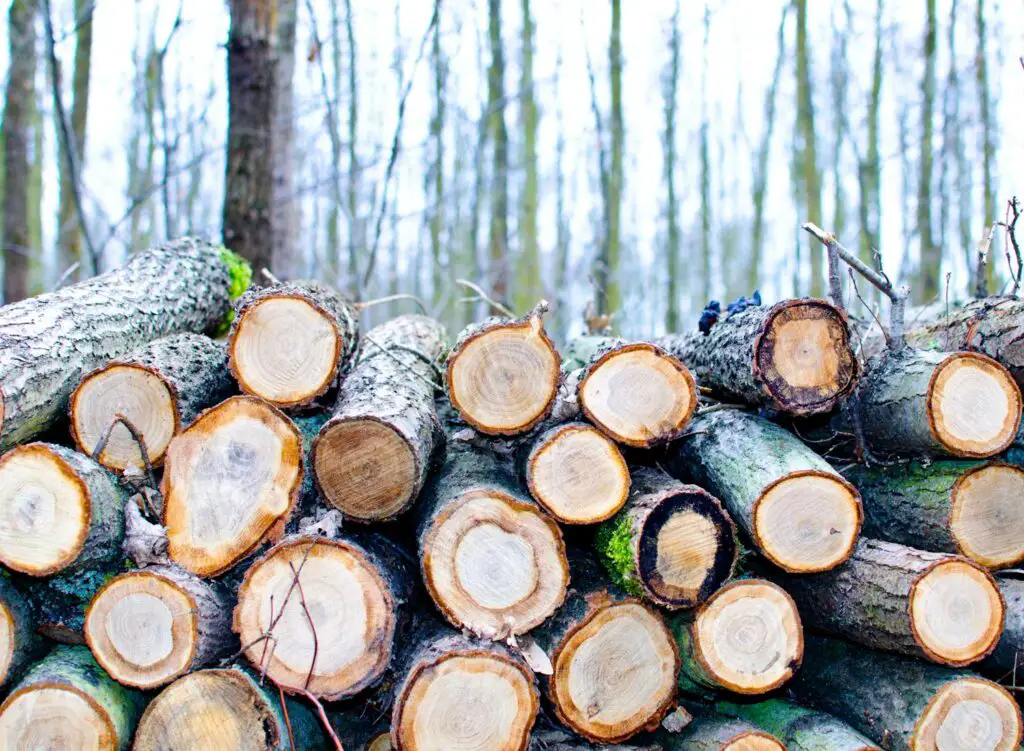
Timberland investment is essentially investing in forested land with the primary goal of harvesting timber sustainably. It’s like having a living, breathing asset that grows in value over time.
However, this isn’t just about chopping down trees; it’s about managing forests responsibly and profiting from the timber they produce.
It’s an asset class that can provide a steady income stream, diversification in your investment portfolio, and environmental benefits.
Timberland investment plays a significant role in sustainable forestry practices and carbon sequestration, contributing to a greener planet.
Benefits of Timberland Investment
Steady Income from Timber Harvesting
One of the most enticing aspects of timberland investment is the periodic income it generates.
Timberland owners can harvest timber at regular intervals, selling it for profit.
This cycle of harvest and replanting makes it a consistent income stream.
Diversification of Investment Portfolio
Adding timberland to your investment mix can enhance diversification.
One thing you should know about investing in timberland is the fact that it’s independent of traditional financial assets like stocks and bonds.
Therefore, when financial markets fluctuate, timber values may remain relatively stable, reducing risk in your portfolio.
Carbon Sequestration and Environmental Benefits
Forests are nature’s carbon sinks. Timberland investment contributes to carbon sequestration, thus helping to mitigate climate change.
Sustainable timberland management practices can enhance forest health and preserve ecosystems.
That’s why we consider it a very profitable lifetime investment opportunity in agriculture.
Cashew Farming
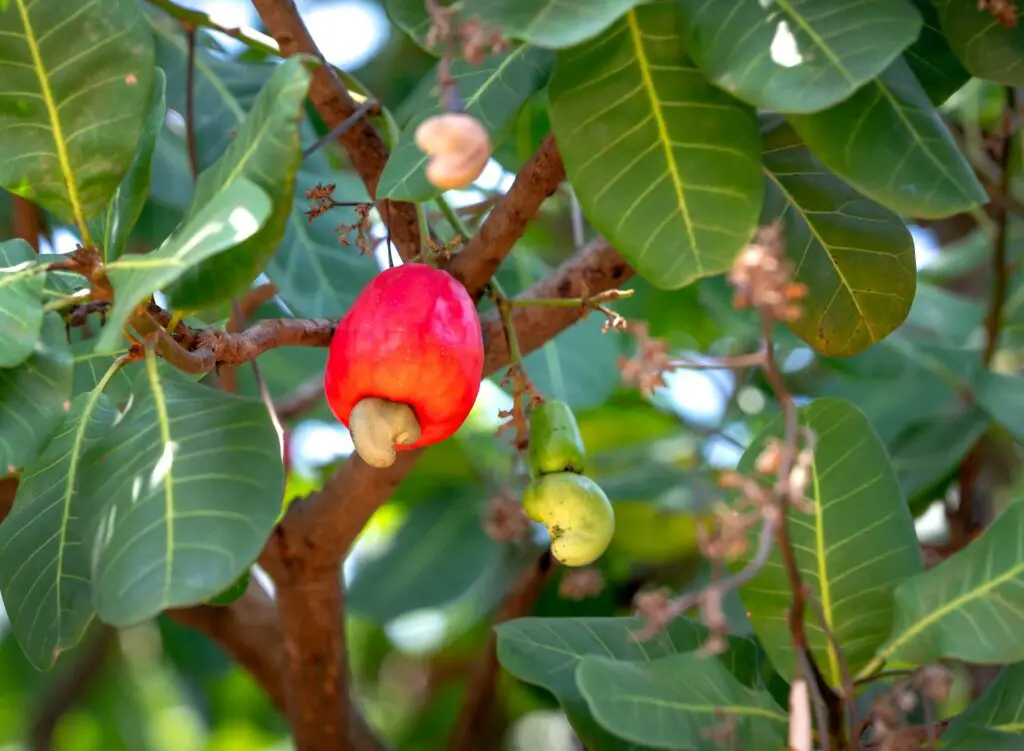
Cashew is considered a perennial crop, due to the fact that it takes a long time to grow and can last for decades, making it a lucrative agricultural venture. Some cashew trees can last for over 50 years, thus creating generational wealth.
Before it was brought to Africa and Asia, the cashew tree was prominent in Brazil. Ivory Coast, Nigeria, Ghana, Benin, and other African nations intensively cultivate cashews. Other Asian nations, including India, also major in the production of this crop.
Since cashew is a tropical crop, it thrives in tropical environments. So, it may not be at its best in temperate climates. You should be aware that the primary reason why people engage in cashew farming is basically for its nuts, that is, the seeds.
Nevertheless, the fruits can be eaten raw or turned into juice. Companies that extract and package cashew juice exist. However, cashew producers cultivate the crop primarily for its nuts.
Steps on How to Grow a Cashew Crop
To grow cashews or establish a cashew plantation, you should follow these steps:
1. Choosing a location for farming
2. Getting ready for soil
3. Selecting a variety of cashew plants
4. Equipment
5. Using irrigation
6. Weather situations
7. Nursery setup and administration
8. Transplanting of cashew seedlings.
9. Weed management
10. Management of fertilizer and manure
11. Controlling diseases and insects
12. Harvesting
13. Cashew processing
14. Marketing
Farmland for Cashew Farming
If you want to invest in cashew farming, it’s advisable to get your own personal farmland. Since cashew is a commodity that can be grown for many years, leasing farmland is not a wise decision.
A healthy soil profile, likely sandy with humus and laterite, should be present on the farms to be exploited. Also, a decent access road is also necessary for the farms in order to facilitate the easy evacuation of farm produce to the market.
Ideal Climate for Cashew Farming
Cashews, being a tropical crop, may thrive in warm, humid climates. Cashews are not tolerant of cold or frost. At least 650 meters above sea level are suitable for general cashew cultivation.
It also favors areas where the temperature is higher than 20°C. As high as 32 degrees Celsius, and sometimes even more, cashews can withstand 1000 – 2000mm annual rainfall is ideal for cashew growth.
Unlike most crops, cashew requires at least four months of dry season to produce at its highest level. Because of this, cashew grows particularly well in Africa’s savannah regions, where the dry season is longer than in the rainforest.
In contrast, cashew crops blossoming and fruiting may suffer from excessive humidity and rainfall.
Getting The Soil Ready
To create room for a cashew plantation, the farmland needs to be cleared of trees, stumps, and weeds. If the farmland is in a virgin forest, this should be done before anything else.
Trees and stumps can be removed with bulldozers, but caution must be taken to prevent the removal of the topsoil. The earth needs to be plowed and harrowed following the removal of the trees and stumps.
Another option is to rig. You may choose not to plow and harrow if the farmland is a virgin forest. Before planting the cashew seedlings, ridging may be employed in locations that are prone to flooding.
Compost, animal dung, and farmyard manure can all be added to soil that has a low organic matter content. Plows should be used to combine these with the soil.
Till the soil takes on a fine texture, it should be plowed multiple times. You can harrow the soil with a hoe.
Applying a high-phosphate fertilizer such as Diammonium Phosphate Fertilizer or Single Super Phosphate Fertilizer to each pit designated for cashew seedling planting is recommended.
Application of single-superphosphate fertilizer (up to 250 grams per planting hole) is possible, depending on soil fertility.
Cocoa Farming
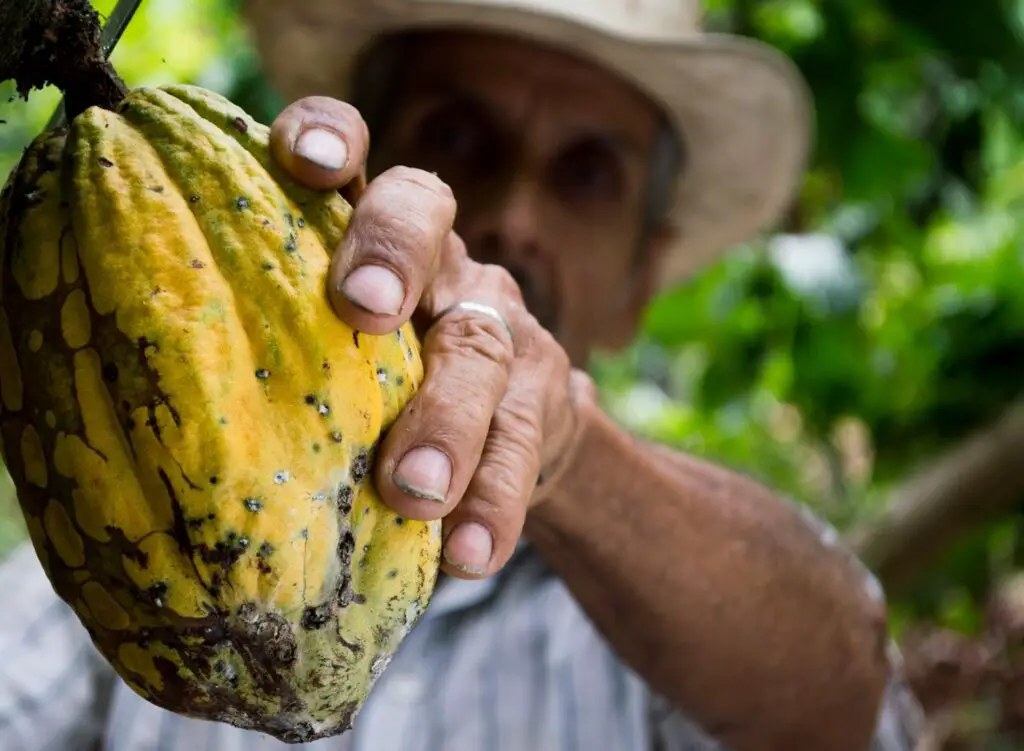
If your goal is to enjoy long-lasting wealth in agriculture, then investing in cocoa farming is a no-brainer. Yes, you heard me right.
Cocoa is undoubtedly one of the oil wells in agriculture. Grown in tropical climates, cocoa is mostly found in portions of southern Asia, Africa, and Latin America.
Everyone understands that cocoa farming can be extremely profitable if done correctly, I’m certain about it.
Chocolate is among the derivatives of cocoa. Throughout the world, chocolate is among the most popular cocoa foods. Almost every nation in the world consumes a significant amount of it.
Like other income crops, cocoa planting can give astute investors access to a lifetime annuity. Planning for your senior years does not require you to be elderly. You can start early by investing in cocoa farming.
Investing in cocoa farming by owning a cocoa plantation will ensure you a lifetime pension; your offspring will continue to receive benefits from the farm’s sales even after your death.
Advantages of Growing Cocoa
It takes more than just planting the main component of your favorite chocolate bar to be a cocoa farmer. It’s a safe and profitable investment.
Cocoa beans can be produced by cocoa trees for up to 25 years after they are grown. It’s just like having a perpetual savings strategy for the long run. In addition, the market for cocoa and chocolate-related products is steady and constantly expanding, making it a viable option.
Furthermore, growing cocoa can be a sustainable endeavor. Grown in shade under the shade of larger trees, cocoa supports biodiversity and preserves the natural equilibrium of the environment.
Thus, you are investing in something that will benefit you financially as well as the environment.
Best Climate for Cocoa Farming
Let’s discuss the weather now. Cocoa trees are extremely weather-sensitive; they thrive best in situations that are just right — not too hot or cold. Their sweet spot, then, is tropical climates that range from 70°F to 90°F (21°C to 32°C).
Cocoa plants obviously adore taking a nice, long shower. Rainfall that falls evenly is best for them, between 40 and 100 inches (1,000 and 2,500 mm) each year. The cocoa pods must, however, have a dry spell in order to ripen without continuous moisture, and there’s always a but to this.
That said, you have to choose a tropical location with the ideal balance of sunshine and rain if you’re considering establishing a cocoa farm.
Best Soil Type for Cocoa Trees
We’ve talked about the weather now, so let’s get down and dirty. Soils with good drainage are preferred by cocoa trees. They don’t like having wet feet. The best soil type is sandy loam or loamy soil because it has the ideal ratio of moisture retention to drainage.
But wait, the texture isn’t the only factor. And when it comes to acidity, cocoa trees are a little picky. Their preferred pH range is 6.0 to 7.5, which is slightly acidic to neutral.
So prepare your soil test kit and ensure that the pH of your cocoa beans is within the acceptable range.
Your Cocoa Marketing Strategy
It’s time to discuss marketing. Producing cocoa is one thing; however, monetizing those beans is an entirely different story. Your business’s success or failure depends on how well you market your cocoa beans.
First things first, quality counts. Make an investment in sustainable agricultural methods and ensure that your beans fulfill global quality requirements. This opens doors to export markets and guarantees a premium price. Networking is essential.
Make connections with traders, producers, and consumers of chocolate both domestically and abroad. Be present in the cocoa community, participate in online forums, and visit agricultural fairs.
Also, take value addition into account. Consider turning your cocoa beans into cocoa butter, powder, or even your own chocolate goods rather than just selling them as raw beans.
This enhances the value of your produce and creates a variety of sales prospects. Remain informed about market developments. Recognize when demand surges, understand what your customers want, and modify your tactics accordingly.
You can get a competitive edge by being adaptable and sensitive to the fluctuations of the market.
Oil Palm Plantation
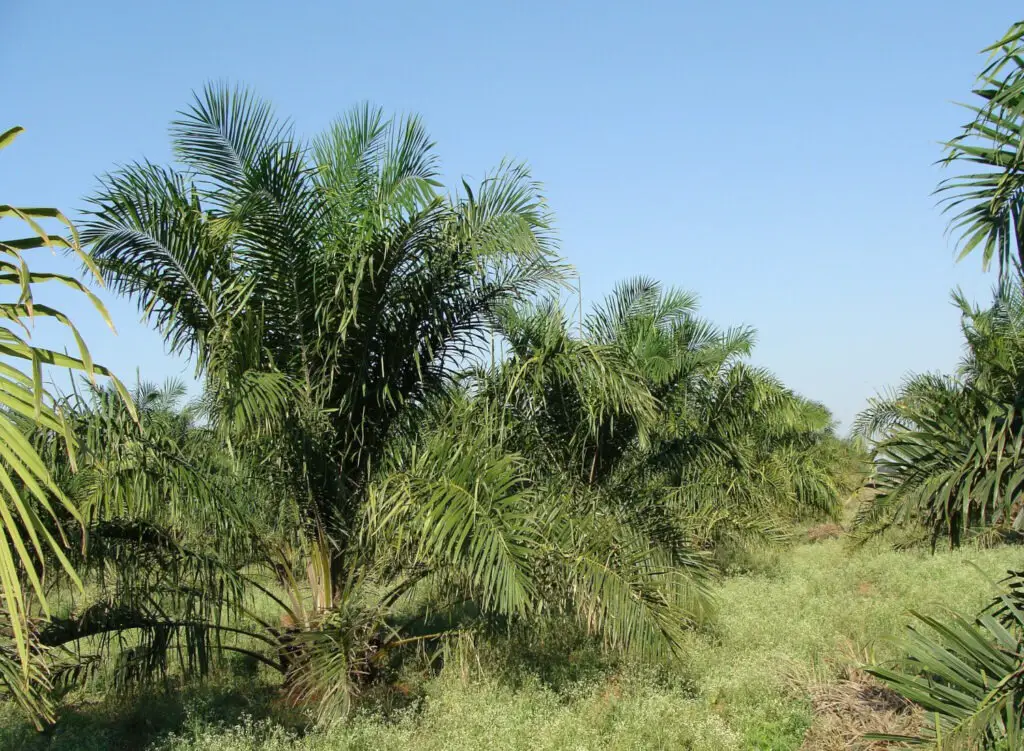
Due to the increasing need for palm oil across a range of industries, including food, cosmetics, and biofuels, establishing an oil palm plantation can be a profitable venture. It may be beneficial to manufacture palm oil because, as you may know, it is quite adaptable and may be used for both domestic use and export.
Although it originated in West Africa, oil palm, scientifically known as Elaeis guineensis, is now planted in many tropical locations worldwide. It yields one of the most productive vegetable oils, which is used for a variety of applications.
Moreover, cooking oil, soap, and even biodiesel are just a few of the commonplace items that are derived from palm fruits.
Oil palm is a significant commodity because of its adaptability and high output per hectare. Establishing an oil palm farm has the potential to change lives.
Advantages of Oil Palm Plantation
Having an oil palm plantation has benefits that go well beyond simple financial returns. This project is fundamentally an effort to promote sustainability and community growth.
The main product made from palm oil is a versatile and in-demand good on a worldwide scale. It can be used in a wide range of industries, from the food industry to make cooking oil to the cosmetics industry to make skincare products.
Moreover, the adaptability of palm oil guarantees a continuous market, offering investors a reliable stream of revenue over time. An oil palm plantation not only has economic advantages but also plays a major role in creating jobs, particularly in areas where the sector is well-established.
Many tasks are involved in the production of palm oil, including planting, harvesting, and processing, which creates jobs for the community. This promotes shared prosperity and a sense of community, in addition to strengthening the economy.
Another important factor is oil palm’s efficiency in terms of land utilization. Compared to other oilseed crops, these trees produce more oil per hectare, which makes them a sustainable option.
An oil palm plantation is in line with the necessity to increase productivity while minimizing the ecological footprint, as concerns about sustainable agriculture and responsible land use are growing.
This investment has long-term financial benefits in addition to supporting the more general objectives of resource management and environmental preservation.
Ideal Weather Conditions for Growing Oil Palm
For an oil palm plantation to be successful, it is essential to comprehend the intricacy of weather patterns. Tropical areas, with year-round high temperatures, are ideal for oil palm cultivation.
The best places for this kind of farming are those close to the equator, such as Southeast Asia, Africa, and some sections of South America.
For healthy growth and abundant fruit production, a temperature range of 24 to 28 degrees Celsius is ideal. Rainfall is yet another essential component. Because they need a constant supply of water, oil palms do best in areas that receive a lot of rainfall.
These trees do, however, exhibit amazing plasticity since they can withstand brief droughts. This resistance provides an extra degree of adaptability, enabling cultivation in regions with seasonal variations in rainfall.
Local weather patterns are also quite important. A comprehensive understanding of seasonal variations, potential hazards such as cyclones or protracted dry periods, and their effects on the plantation is crucial for effective strategic planning.
Also, utilizing natural factors is only one aspect of successful oil palm farming; another is making long-term adjustments to the weather’s changing patterns.
Ideal Soil for Oil Palm Plantation
The selection of soil is a critical factor in an oil palm plantation’s success. Choosing the proper soil type is like building a strong foundation for a long-lasting structure. The ideal soil type for oil palm agriculture is loamy, well-drained soil with high fertility.
These soils permit water to penetrate without creating waterlogging, which is bad for oil palm trees’ health. Another important factor is the acidity of the soil. Soils that vary from slightly acidic to neutral — pH 4.5 to 7 are ideal for oil palm growth.
Beyond this range, the soils have the potential to hinder growth by preventing the absorption of vital nutrients. Thus, making sure the selected property satisfies these particular requirements requires carrying out an extensive soil test prior to constructing the plantation.
This proactive strategy ensures the general health of the oil palm trees and creates the conditions for a flourishing plantation by reducing the possibility of nutrient deficiencies.
Furthermore, continued success depends on continued soil management techniques. The productivity of the oil palm plantation is largely dependent on the long-term health of the soil, which is enhanced by regular monitoring, fertilizer addition, and erosion control.
Essentially, a comprehensive approach to soil management and care is necessary to cultivate success from the ground up.
Marketing Strategy
Sifting through an oil palm plantation’s abundant produce is just one aspect of the process. It takes a carefully thought-out marketing plan to turn this abundance into a lucrative endeavor.
Establishing connections with buyers from both domestic and foreign markets is essential to success.
Connecting with new customers, building rapport, and establishing long-term partnerships can be accomplished through networking within the palm oil sector, attending industry events, and utilizing online platforms.
The marketing playbook presents value addition as a powerful tactic. Converting palm oil into byproducts like soap, cooking oil, or cosmetics increases market competitiveness while also broadening the product line.
In addition to satisfying customer needs, this strategy presents the plantation owner as a flexible participant in the palm oil market, able to adjust to shifting consumer tastes and market trends.
Consumer choices are increasingly centered on sustainability and ethical activities. Achieving the necessary certifications and adopting ecologically friendly farming practices can greatly increase market attractiveness.
Customers are more aware than ever of the effects that the products they select have on the environment and society.
An oil palm plantation can stand out in a competitive market by presenting itself as a responsibly run and sustainable business, appealing to a growing population of environmentally conscious customers.
I’ve an article on starting an oil palm plantation which you can read HERE.
Farming of Coconuts
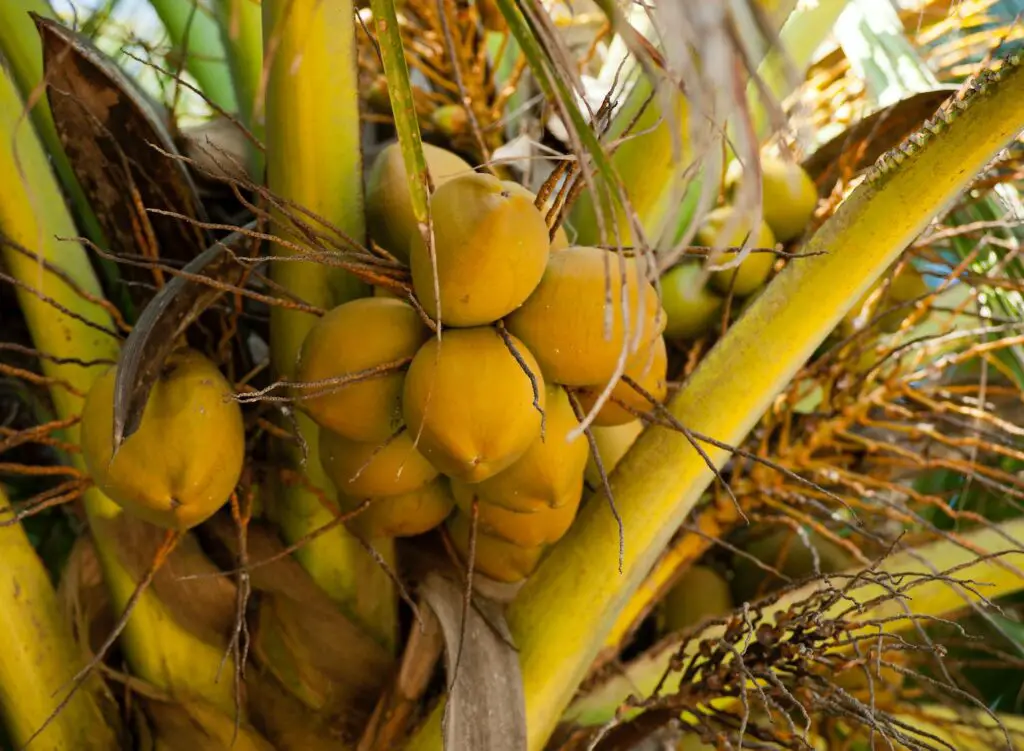
One of the most lucrative cash crop farming endeavors is coconut farming, which, with proper management, may yield a respectable return on investment every year.
Studies show that since coconut trees can bear fruit for up to 70 years or more, this is a long-term investment that can benefit multiple family generations.
A staple food for nearly everyone on the planet, coconuts are the main product of coconut palms. From the coconut to its water and even its husk, which can be turned into coconut oil, chips, flakes, nuts, and coconut paste, as well as carpets, doormats, and brushes, they have a plethora of uses.
Benefits of Coconut Farming
What am I telling you? You can get a great deal of advantages from growing coconuts. To begin with, there are several uses for coconuts. Each component, including the water, meat, and oil, has a specific function.
Coconut water is a natural hydrator rich in electrolytes, not merely a trendy drink. The meat is a nutritious powerhouse, whether consumed raw or cooked.
Furthermore, you must not overlook the importance of coconut oil as a staple in both culinary and beauty regimens.
Now consider the long run. Perennial means that coconuts yield yields year after year. Your coconut trees have a 70-year coconut-producing lifespan once they reach maturity. That is like possessing a green, leafy retirement scheme.
Coconut trees are a great option for anybody searching for a low-stress, sustainable investment because they also require very little upkeep.
Best Weather Conditions for Coconut Farming
Like theatrical sun worshippers from the tropics, coconuts enjoy nothing more than to soak up the sun and dance in the rain. That means you’ve hit the coconut jackpot if you live in a tropical area with high humidity, temperatures that don’t go too low (preferably over 72°F or 22°C), and a tropical environment.
The ideal environment is created by these factors for coconut plants to thrive. But, as they dislike cold weather, you may want to think about making a microclimate or cultivating dwarf coconut kinds in indoor pots during the winter months if you live in a northern location.
Coconut Trees’ Ideal Soil
While they do not have many preferences, coconuts are not very picky about their soil. Their specialty is well-drained sandy loam or loamy soils.
Make sure the soil isn’t prone to waterlogging because they dislike having their feet wet. The structure and nutrient content of the soil can be greatly improved by adding organic matter.
Another thing to consider is the pH level; coconuts grow better in slightly acidic soils than in neutral ones. Lime might help your coconut palms thrive if your soil leans more toward the acidic side.
Marketing Strategy for Your Coconuts
Now that your coconut grove is operational, it’s time to publicize your coconuts around the globe. It can be gratifying and enjoyable to market your coconut products.
Launch locally by setting up a roadside stand, farmers’ market, or grocery store. Coconuts are a great example of a fresh, locally-grown product that people adore.
Think about expanding your selection of coconuts. Thoughts on fresh coconuts aside, how about items made with coconut oil? A few options are coconut flour and coconut milk.
Also, share your inventive recipe creations on social media. Establishing an online presence might lead to access to a larger market.
You can also work together with nearby establishments to feature your brand. In any industry, including coconut farming, networking is essential.
To generate awareness and draw attendees, consider hosting your own event with a coconut theme or participating in food festivals and agricultural fairs.
Conclusion
Investing in agriculture offers not only financial stability but also the satisfaction of contributing to food security and environmental sustainability.
These five-lifetime investments in agriculture provide a diverse range of opportunities to explore, each with its own benefits.
The key, however, is to carefully assess your goals, resources, and commitment before embarking on any agricultural investment journey.
By doing so, you can secure a prosperous and fulfilling future in agriculture. I hope you found this article helpful and actionable.
Please, share your thoughts with us via the comment section below.
Also, you can visit our page to explore other related articles.
